LG G5 vs Galaxy S7: The titans are unleashed, but which is better?
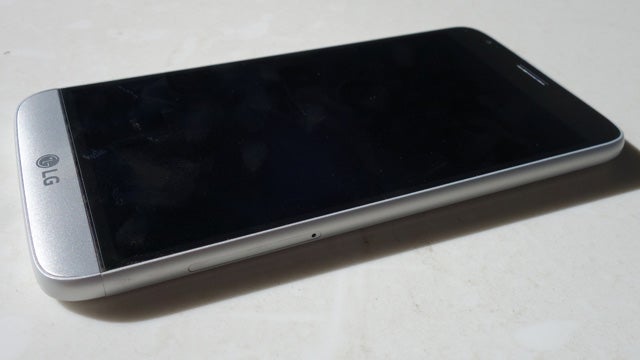
Mobile World Congress 2016 saw the launch of two of this year’s biggest next-gen smartphones, and they’re now available to buy in shops.
While the LG G5 and Galaxy S7 represent the two South Korean companies’ top-end offerings, both have taken very different approaches to design and features.
Let’s take a look at exactly where these heavyweight handsets differ.
LG G5 vs Galaxy S7: Design
LG G5: 7.7mm thick, 159g, all-metal build, modular design
Galaxy S7: 7.9mm thick, 152g, metal alloy, glass front and back
The Galaxy and LG G series have had mixed receptions in the past when it comes to design. The faux-leather back of the Galaxy S5 and the plasticky G3 didn’t exactly light up the world – or worry Apple – but those were the bad old days.
Samsung, in particular, has seriously upped its game since. Following on from the good work started with the Galaxy S6, the S7 looks good and feels great, without compromising on the features that Android users love. Samsung has given us back the microSD slot, for example.
The Galaxy S7’s tapered back ensures that it’s much more pleasant to hold than its predecessor, and it also means that the camera doesn’t stick out so much.
- Buy now: Samsung Galaxy S7 on EE (5GB) for £27/month
- Buy now: Samsung Galaxy S7 on Vodafone (16GB) for £36/month
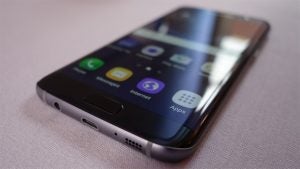
The LG G5 looks decent, but we still found its design to be a little disappointing. The metal unibody design feels more robust than anything LG has made before, and we’re quite glad that it’s finally moved the volume keys from the back. However, it doesn’t feel as premium as the Galaxy S7 in the hand, with a curious hollowness to its metal construction.
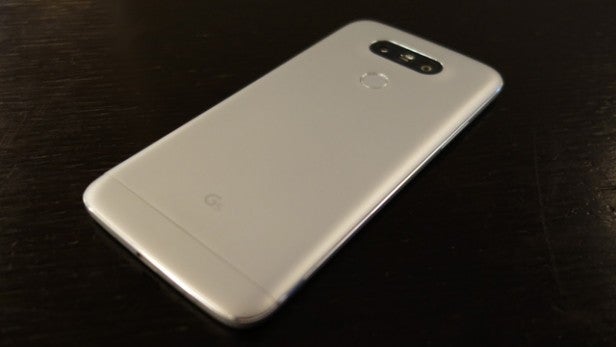
In terms of eye candy, only the slightly sloping top really stands out as unique.
The S7 is undoubtedly the prettier phone of the two, and the one to which fashion-conscious buyers will be drawn. Its IP68 rating also means that it’ll stand up to getting wet better, but we’ll discuss that more later.
LG G5 vs Galaxy S7: Screen
LG G5: 5.3-inch, 2,560 x 1,440 IPS Quantum display, 554 ppi, 900 nits brightness, always-on
Galaxy S7: 5.1-inch Super AMOLED, 2,560 x 1,440, 577 ppi, 855 nits brightness, always on
There’s no denying Samsung’s Super AMOLED screen technology is the best around. Its deep blacks and rich colours provide a luxurious viewing experience. Nothing has changed with the quad-HD screens on the 5.1-inch Galaxy S7 – they look better than ever.
However, the IPS screen on the quad-HD 5.3-inch LG G5 also looks great. Colours are vibrant and top brightness is a retina-crisping 900 nits. It’s perfect for using out and about on bright, sunny days, and that’s also brighter than the 855 nits of the Galaxy S7.
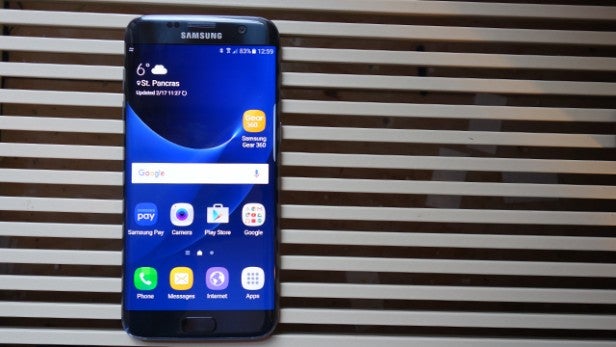
What’s more, the LG G5’s IPS LCD panel produces a softer picture, with colours that are arguably more true-to-life than the Galaxy S7 display – though the fact that you can tweak the Galaxy S7 display to your liking goes some way to mitigating this.
Both phones also boast always-on screens, permanently displaying things like the time and calendar notifications. We found LG’s implementation to be much better than that of Samsung, though, as it enables notifications for far more apps.
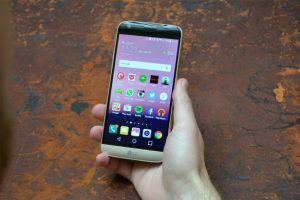
Although such functionality may appear to be a waste of battery life, in fact it can actually help to improve stamina. That’s because most people turn their phone on more than 80 times a day just to check the time. Turning on the screen uses far more power, even if it’s for only a few seconds at a time. The always-on displays use around 1% of a phone’s battery an hour.
Surprisingly, LG’s always-on display consumes less power than the Galaxy S7’s in our experience. The latter’s Super AMOLED display should mean otherwise, but for some reason its implementation is less efficient.
The S7’s screen is a treat for the eyes, but the vast majority of people will be perfectly happy staring for hours at either of these phones.
- Buy now: Samsung Galaxy S7 on EE (5GB) for £27/month
- Buy now: Samsung Galaxy S7 on Vodafone (16GB) for £36/month
LG G5 vs Galaxy S7: Performance
LG G5: Quad-core Qualcomm Snapdragon 820 chipset – dual-core 2.15 GHz Kryo & dual-core 1.6 GHz Kryo, Adreno 530 GPU, 4GB RAM
Galaxy S7: Exynos 8890 octa-core/Snapdragon 820 quad-core CPU, Mali-T880 MP12/Adreno 530 GPU, 4GB RAM
There isn’t much to pick between these two powerful phones. Both make use the Snapdragon 820 chipset, though in the Galaxy S7’s case that’s only in a few territories. It mainly uses Samsung’s own Exynos 8890 chip, including in the UK.
Related: Best Samsung S7 deals
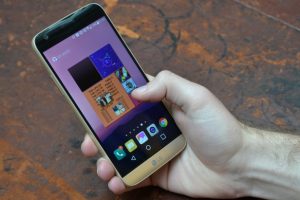
Both phones pair their processors with 4GB of RAM, which is plenty for running modern apps and the Android OS.
That’s a tremendous amount of firepower, regardless of the chip. LG has finally reached some kind of parity with Samsung – all previous LG flagships have been less powerful than their Samsung counterparts – though the Exynos 8890 trumps the Snapdragon 820 on a number of benchmarks. In particular, the Exynos wins the Geekbench multicore test hands-down, as well as the AnTuTu benchmark.
These phones are both absolute beasts though. Of course, performance is as much about perception as what’s under the hood and the software plays a big part in that.
LG G5 vs Galaxy S7: Camera
LG G5: 16-megapixel & 8-megapixel, f/1.8 & f/2.4 lens, OIS, laser autofocus, 4K video, 8-megapixel wide-angle front camera
Galaxy S7: 12-megapixel, phase detection, Dual Pixels, OIS, f/1.7 lens, 1/2.6″ sensor, 1.4 µm pixel, 4K video, 5-megapixel front camera
Samsung has opted to iteratively improve its rear camera. Its dropped a little resolution – going from 16 megapixels in the S6 to 12 megapixels on the Galaxy S7 and S7 Edge. Don’t let that worry you, though. Samsung has increased the size of every pixel and this means that it lets in more light.
In fact, Samsung claims the Galaxy S7 is 95% better than the S6 at taking photos in low-light conditions. Autofocusing has also been made faster with a new Dual Pixel system. It’s the fastest AF we’ve seen on any phone.
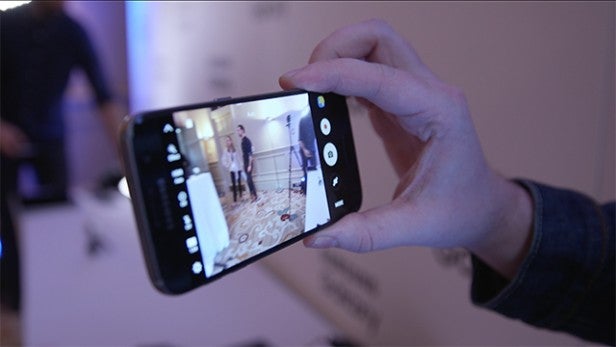
LG has taken a different approach. It retains the same 16-megapixel rear and 8-megapixel front cameras as the G4, but adds to them with an 8-megapixel 135-degree wide-angle camera on the back.
The product engineers at LG think smartphone cameras are good enough right now and that they need to offer something new. A wide-angle lens certainly does that. It lets you fit a whole lot more in frame, and offers a rudimentary optical zoom effect.
We’re big fans of this second camera, as it can genuinely transform your impromptu landscape shots.
It’s not as good as the Galaxy S7 in low-light, but it’s far from bad. It has a similar (though slightly inferior) f/1.8 lens aperture, and like the S7 it benefits from OIS to enable the shutter to remain open that fraction longer without excessive blurring.
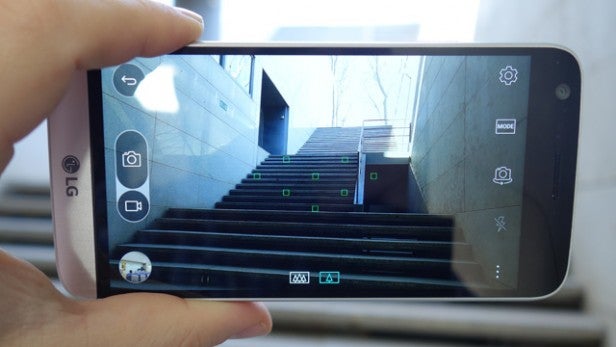
Both phones offer double-tap button shortcuts to the camera, but we’d take the Galaxy S7’s home button prompt over the LG G5’s volume key-based option any day.
Conversely, the LG’s 8-megapixel wide-angle camera beats Samsung’s 5-megapixel equivalent – useful to know if you’re a selfie addict.
This is a tough one. On the one hand, the Samsung packed pretty much the single best camera into its S7; on the other, LG has put the widest-angle camera we’ve ever seen on a phone, which can create some genuinely unique. Overall, the sheer speed, accuracy, and low-light chops of the Galaxy S7 gets it the nod.
LG G5 vs Galaxy S7: Features
LG G5: Modular design, 24-bit audio, USB Type-C, fingerprint sensor
Galaxy S7: IP68 rating, Wireless charging, fingerprint sensor
When it comes to adaptability and sheer innovation, the LG G5 can’t be beaten. A press of a button results in the bottom sliding out, letting you remove and replace the battery while also providing the ability to incorporate a new module to add functionality.
LG has announced two so far – the LG Cam Plus and B&O LG Hi-Fi Plus. The former delivers a handy grip and camera controls with a little extra juice, while the latter ups the audiophile stakes with a Hi-FI DAC offering 32-bit sound quality.
We wish LG had committed more to this idea, and that it had produced more and better ‘Friends’ from the get-go. Both of the existing modules seem a little niche. The camera grip isn’t particularly useful, while the DAC doesn’t match the phone’s design and is very expensive (£150).
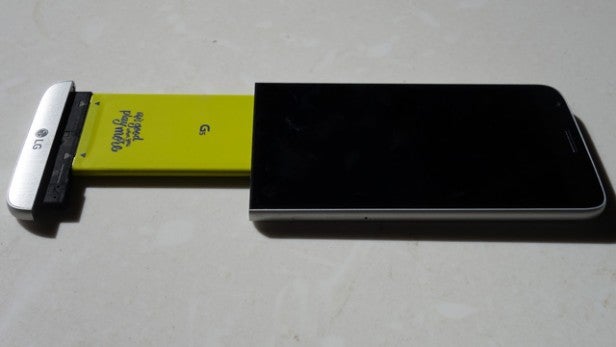
Even without that DAC, the LG G5 already trumps the Samsung Galaxy S7 on native audio quality. The 3.5mm headphone jack outputs 24-bit audio and comes with aptX HD that also manages to stream 24-bit over Bluetooth. The Galaxy comes with 16-bit plain aptX instead.
Water-resistance is the one stand-out feature the Galaxy S7 holds over the G5, but it’s a fairly big one. IP68 certification means that it can be submerged in 1.5 metres of water for 30 minutes.
The LG G5 uses the new USB Type-C connector v3.0 for charging and data transfer. This reversible USB is what all smartphones – not to mention laptops – will eventually move to in time. The S7 sticks to micro-USB, which is a bit of a shame, but it does at least support wireless charging, which the LG doesn’t
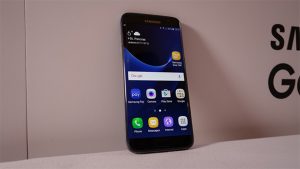
Companion devices are in vogue at the moment. Samsung announced the Gear 360 VR camera with the Galaxy S7 and S7 Edge and LG announced three “friends” for the G5 – the LG 360 Cam VR camera, the LG 360 VR headset and the cute Rolling Bot that can monitor your home and play with your pets. LG wins on the peripheral front, then.
Both handsets also come with excellent fingerprint sensors built into their home buttons, the Galaxy S7 on the front, the LG G5 on the back.
When it comes to distinguishing features, the S7’s water-resistance will likely be of more practical use. Still, when it comes to innovation, it’s the LG G5 that excites – although we’re dubious as to the long-term value of its modular concept.
LG G5 vs Galaxy S7: Battery
LG G5: 2,800 mAh
Galaxy S7: 3,000 mAh
One of the charges levelled at the Galaxy S6 was that its battery life wasn’t as good as it should have been. Samsung has listened to the feedback and come back strongly with a 3,000mAh battery on the S7.
The battery on the LG G5, by contrast, has actually dropped in size from the LG G4 to 2,800 mAh.
Not that it makes an awful lot of difference – the screen is a little smaller than its predecessor, and the Snapdragon 820 a little more efficient.
When compared to the Galaxy S7, there’s really not much in it. Both are nightly chargers, but both will get through a day of moderate usage with plenty to spare.
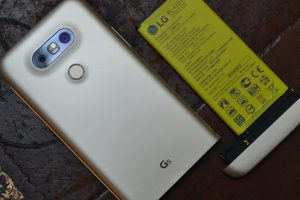
The Galaxy S7 seems to have more stamina overall, though, so heavy users might give it the nod.
The LG G5’s battery does trump the Galaxy S7 in a couple of areas though. It’s removable, for one thing, which means that you can pack a spare one if you need extra juice on the go.
It’s also Quick Charge 3.0-enabled, while the Galaxy S7 is only on Quick Charge 2.0. This means you can power up in around an hour. Curiously, however, LG has only packed the phone with a Quick Charge 2.0 charger. Strange.
As for the Galaxy S7, it wins brownie points by offering wireless charging, which the LG G5 does not.
LG G5 vs Galaxy S7: Software
LG G5: Android 6.0.1, LG UX
Galaxy S7: Android 6.0.1, TouchWiz UI
The latest version of Android powers both phones. Android Marshmallow isn’t left stock on either, though. Samsung has its TouchWiz, while its competitor has the new version of its LG UX 5.0.
TouchWiz has come on leaps and bounds over the past few years. It’s nowhere near as bloated or slow as it used to be, and comes with some useful and unique features such as Samsung Pay, Knox, Game Launcher and SideSync.
It’s still a little sluggish at times, though, and we continue to wish that Samsung would go with a more stock Android experience.
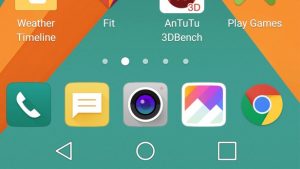
LG’s the same, in many ways, offering a heavily skinned take on Android that detracts, rather than adds, to the core experience. LG UX is arguably a softer touch than TouchWiz – it doesn’t change Android quite as much. Neither does it have as many unique selling points, though, and it’s arguably not as sharp in its own right.
LG has tried to change things up by dropping the app drawer, borrowing a lead from Apple’s (and Huawei’s) book. But it still keeps ploughing in loads of rubbish bloatware.
Samsung’s software might not be perfect, but it keeps improving, and the introduction of Samsung Pay to a greater number of markets is a major win.
Verdict
In considering these two phones, we’re pleased at how much they’ve diverged from a time when the ranges were really quite similar.
Is a wide-angle camera more useful than water-resistance? Do you value a phone that lasts longer, or one to which you can add specialised modules and replace the battery? It’s great to have such options, and both phones are safe bets in their own right.
However, we’re not here to sit on the fence. If you’re simply after the best all-round phone that you can get, then the Samsung Galaxy S7 is clearly better than the LG G5. One glance at our respective review summaries will tell you that,
- Buy now: Samsung Galaxy S7 on EE (5GB) for £27/month
- Buy now: Samsung Galaxy S7 on Vodafone (16GB) for £36/month
LG’s execution simply doesn’t sell the whole modular idea as the essential feature that it could be, and the design feels compromised as a result. Meanwhile the Galaxy S7 is pretty much faultless from a hardware perspective. It’s the phone to beat as we head towards the second half of 2016, and LG will need to do better to overcome it.


